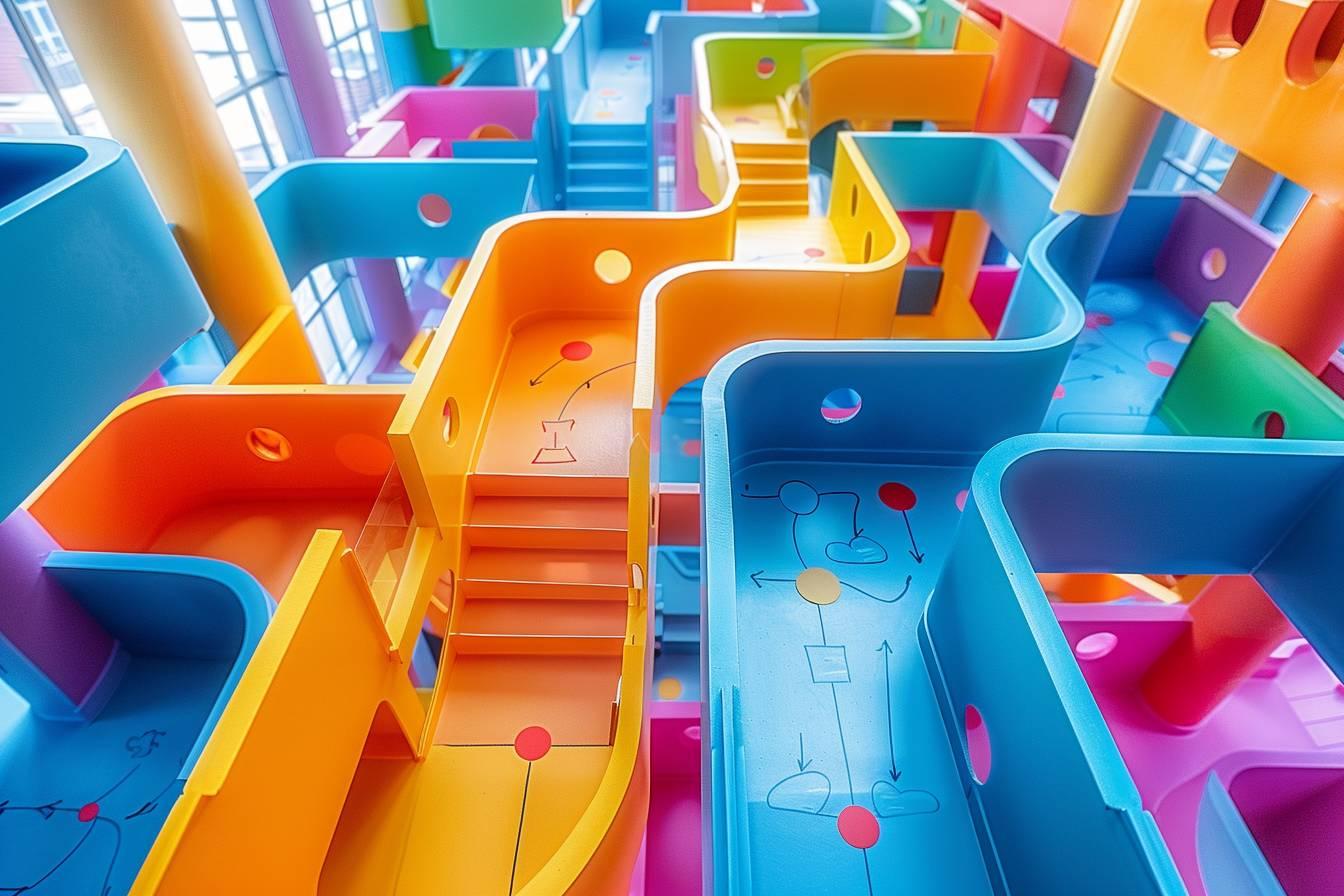Mind mapping is a powerful tool for visually organizing ideas. This graphic representation technique allows you to structure information intuitively and creatively. Whether you’re a student, a professional or simply want to improve your productivity, the mind map can revolutionize the way you think and work. Let’s find out together how to create an effective mind map, and what tools are available to help you achieve it.
The fundamentals of mind mapping
The mind map is based on a simple principle: start with a central idea and develop branches. This tree-like structure reflects the natural functioning of our brain, which associates ideas rather than classifying them linearly. To create an effective mind map, it’s essential to understand its basic components:
The central idea: This is the starting point of your map. It should be clear and concise, and generally represented at the center of your workspace. For example, if you’re planning a nomadic trip, this concept could be your central idea.
Main branches: These are the main themes that flow from your central idea. They should be distinct and represent the major aspects of your subject. In our travel example, branches might include “destinations”, “budget”, “activities” and “preparations”.
Sub-branches: These provide additional detail to each main branch. They allow us to go deeper into each aspect and add specific information. For example, the “destinations” branch could have sub-branches such as “Europe”, “Asia”, “South America”, etc.
To make your mind map more effective, use colors to differentiate branches and images to illustrate concepts. These visual elements stimulate memory and facilitate overall understanding of the subject.
Here’s a list of the benefits of mind maps:
- Stimulates creativity
- Improves memorization
- Facilitates synthesis of complex information
- Provides a quick overview
- Promotes idea generation
Techniques for a successful mind map
Creating an effective mind map requires the application of a number of proven techniques. These methods will help you structure your thoughts clearly and coherently, while maximizing the visual impact of your map.
Use keywords: Rather than writing full sentences, use keywords or short phrases. This makes for quicker reading and better recall. For example, instead of writing “Prepare travel documents”, simply write “Passport” or “Visa”.
Prioritize information: Organize your ideas from the general to the specific. The most important concepts should be close to the center, while the details move toward the periphery. This structure helps you to grasp the essentials quickly, while allowing you to go deeper if necessary.
Use symbols and icons: Incorporate simple symbols to represent recurring concepts. For example, an exclamation mark for urgent tasks or a light bulb for innovative ideas. These visual cues make your map easier to read.
Create connections: Don’t hesitate to draw links between different branches if ideas are related. These connections can reveal unexpected associations and stimulate your thinking.
To illustrate these techniques, here’s a table comparing traditional and innovative approaches to creating mind maps:
| Traditional approach | Innovative approach |
|---|---|
| Use of long text | Concise keywords and phrases |
| Linear structure | Tree structure |
| Monochrome | Use of colors |
| No images | Integration of icons and images |
| Limited connections | Multiple links between ideas |
By applying these techniques, you’ll significantly improve the effectiveness of your mind maps, making them more intuitive and easier to consult.

Tools for creating mind maps
Although mind maps can be created with a simple pencil and paper, there are many digital tools available today to facilitate their creation and sharing. These software programs offer advanced features that enrich the mind mapping experience.
MindMeister: This is a collaborative online tool for creating interactive mind maps. It offers an intuitive interface and the possibility of working with several people on the same project in real time. Ideal for geographically dispersed teams.
XMind: This desktop and mobile software offers a wide range of templates and styles. It is particularly appreciated for its clean aesthetics and presentation features.
Coggle: Easy to use, Coggle stands out for its ability to create complex diagrams with overlapping branches. It also makes it easy to add images and links.
Freemind: This free, open-source solution offers all the basic features needed to create effective mind maps. Although its interface is less modern, it remains a solid option for novice users.
Here’s a list of criteria to consider when choosing a mind mapping tool:
- Ease of use
- Collaboration features
- Customization options
- Cross-platform compatibility
- Export capabilities
- Cost and pricing model
Whatever tool you choose, the important thing is to find the one that best suits your needs and the way you work. Don’t hesitate to test several solutions before deciding.
Optimizing the use of mind maps
To get the most out of your mind maps, you need to adopt certain practices and integrate them effectively into your thinking and working process. Here are a few tips to optimize their use:
Iteration and revision: A mind map is never really finished. Revisit it regularly to add new ideas, delete obsolete elements or reorganize information. This dynamic approach keeps your map fresh and relevant.
Collaboration and sharing: Use your mind maps as a basis for collective brainstorming. Share them with your colleagues or peers to gather their ideas and perspectives. This method considerably enriches the content of your map and stimulates the group’s creativity.
Integration with other tools: Combine your mind maps with other productivity techniques. For example, use them alongside the GTD (Getting Things Done) method to plan your projects, or in conjunction with the Pomodoro technique to manage your working time.
Adapt to the context: Adjust the level of detail of your card according to its use. A card intended for a public presentation will be more streamlined than one used for detailed personal planning.
The effectiveness of a mind map lies in its ability to adapt to different contexts and needs. Whether you’re using it to take notes at a conference, plan a complex project or organize your ideas for a book, the flexibility of this tool makes it a valuable ally in many situations.
By practicing regularly and experimenting with different approaches, you’ll develop your own mind mapping style. Remember, the main aim is to improve your understanding and productivity. If your mind map contributes effectively to this, then you’re on the right track.

